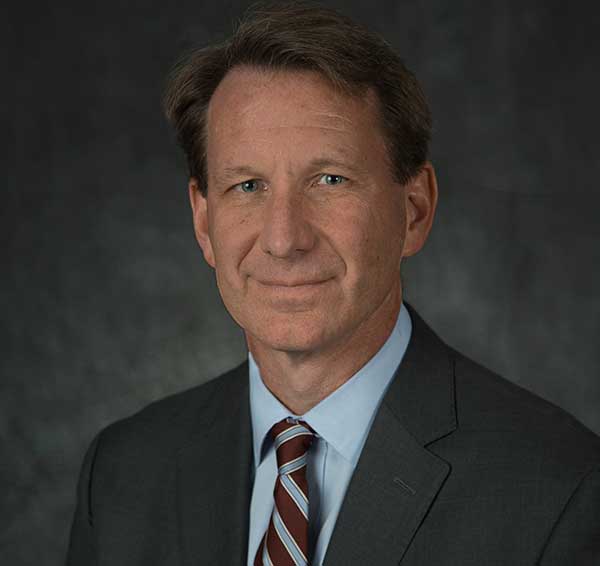
The Challenging Landscape of Cancer and Aging: Charting a Way Forward
January 24, 2018, by Norman E. Sharpless, M.D.
Earlier this month, I had the privilege of giving two scientific talks: one at a Grand Rounds lecture hosted by NCI’s Center for Cancer Research, and a second held at the Sidney Kimmel Comprehensive Cancer Center at Johns Hopkins University. Both talks focused on my research and observations on the dynamic interplay between cancer and aging.
The experience reminded me of two things.
First, I love talking about science with other scientists and experts, and I hope to do much more of that during my tenure here at NCI.
Second, from my perspective as the NCI director—who must take a broad view of this and all research areas that the institute funds—there is no question that we need more than just a deeper understanding of how the biological changes seen in aging are related to, and can help give insights into, the biology of cancer.
Indeed, people’s age affects everything from the type of treatments they can or should receive, their eligibility and ability to participate in clinical trials, and their ongoing needs after completing treatment.
In short, like many of the research areas NCI supports, the nexus of age and cancer is a complex topic with no simple answers.
An Aging Population
Thanks to improvements in health care, life expectancy in both the United States and globally is substantially longer now than it was 50 years ago.
In 2010, more than 40 million people in the United States, or 13% of the population, were older than age 65. This demographic, the fastest-growing segment of the population, will more than double to nearly 84 million, or more than 20% of the population, by 2050.
The convergence of an overall aging population and a peak cancer incidence among those aged 65 to 74 will result in a significant rise in the number of people diagnosed with cancer. (Cancer also occurs at a high rate in people older than 75, but at that age people are more likely to die from other medical conditions.)
It’s clear that we need to better understand how the biological underpinnings of aging affect the onset and trajectory of cancer to address this looming public health challenge.
Aging is a Risk Factor for Cancer
Age is a well-recognized risk factor for cancer development. In fact, you could say aging is the major carcinogen. So, while I’ll admit I like the Rolling Stones, not all their lyrics translate well to the scientific arena. When it comes to cancer, time is not “on our side.”
The normal aging process affects many important biological processes within our bodies that result in the deterioration of proteins and DNA in cells. Many of these damaged cells enter a state of arrested growth, called “senescence”—no longer dividing and growing, but still remaining metabolically active and capable of causing problems.
Senescence is an efficient protective mechanism against cancer, forcing would-be cancer cells to stop dividing. But the senescence mechanism sometimes fails, and accumulating cancer-causing mutations produce the uncontrollable cell growth that—with a supportive microenvironment—causes the formation and spread of cancer.
The longer we live, the more errors our genes accumulate. Over time, these mutations can lead to cancer.
Beyond these intrinsic cellular changes, other bodily processes become less effective with age. The body’s immune system, for example, becomes less protective and resilient, and is less efficient in detecting and fighting infection and diseases, including cancer.
Learning More About Cancer and Aging
NCI has invested and will continue to invest in research focused on gaining a better understanding of the intersection of aging and cancer, and how that knowledge might allow for the development of more effective cancer preventive, detection, and treatment strategies.
One recent initiative in this area is a joint collaborative effort with the National Institute on Aging (NIA) and the Samuel Waxman Cancer Research Foundation. This initiative is intended to promote and support interdisciplinary research projects, sharing of resources, and development of new technologies and approaches to better understand how the physiological changes associated with aging affect cancer development, progression, and response to therapy. An innovative feature of this initiative is that it allows investigators at NIA and NCI to collaborate with investigators at institutions across the country.
NCI is also funding research to better understand the biological processes that make an aging body more susceptible to cancer. Using mouse models of cancer, the aim of these studies is to generate a robust set of data to assess the potential effects of age on cancer progression or therapeutic response.
Many other biological aspects of aging are also under investigation, including the shortening and dysfunction of telomeres, which are the specialized DNA sequences at the ends of chromosomes. Telomeres can serve as molecular markers of aging and their dysfunction has been linked to the transformation of normal cells into cancer cells. I have spent a good deal of time studying the various cellular stresses such as telomere shortening that cause senescence, and I plan to pursue this further in the intramural lab that I am establishing at NIA.
Advances in technology are also leading to the development of new research areas. As one example, new technologies enable us to look at the proteins and RNA within isolated cells from both young and old mammals, helping us to understand more precisely how cellular aging occurs in the body.
Studies of human genetic diseases are also helping to improve our understanding of the relationship between aging and cancer. Progerias—genetic conditions associated with accelerated aging—may, for example, offer clues to unraveling this relationship. People with Hutchinson-Gilford progeria syndrome (HGPS) appear to have a decreased risk of cancer, whereas people with Werner syndrome, a form of progeria that occurs in adults, have higher cancer rates.
A recent discovery by NCI researchers of a cellular pathway involved in HGPS may help improve our understanding of the normal aging process and lead to strategies to slow the effects of aging on tumor development.
Other promising approaches to help shed light on cancer and aging include genome-wide association studies (GWAS) that involve analyzing DNA from hundreds of people. Such analyses have, for instance, identified factors that regulate cellular senescence. Other studies have built on these findings, including one linking a rare genetic mutation seen in Amish populations that appears to restrict cellular senescence without increasing the risk of cancer.
Treating Cancer in Older Patients
Beyond the research lab, improvements in cancer treatments have presented their own challenges.
Treating older cancer patients, who often have other health conditions, may limit the use of specific therapies. Clinicians may be reluctant to give older patients potentially beneficial therapies because there isn’t enough evidence to show that the standard dosage can be safely administered or that the treatment is likely to improve survival in this age group.
This practice of less intensive therapy in older patients is historically understandable. But many in the growing field of geriatric oncology now consider chronological age to be just a number. Instead, they focus on patients’ physiological age, as determined via geriatric assessment, as a better predictor of whether a patient should receive aggressive cancer therapy.
Several trials supported by the NCI Community Oncology Research Program (NCORP), in fact, are working to address these issues. One recently launched trial, for example, is testing whether a geriatric assessment can help reduce the side effects of cancer treatment toxicity in older patients. A second trial that will soon launch will test the drug palbociclib (Ibrance®) specifically in women 70 and older with metastatic breast cancer.
Expanding Clinical Trial Eligibility to Include Older Cancer Patients
Indeed, there is much still to learn about providing the best treatment to the growing population of older cancer patients, who have unique health and psychosocial needs.
An ongoing dilemma is the limited data from clinical trials on patients over the age of 65.
It’s been a Catch-22, because the only way to get the evidence that supports the use of these therapies in older patients is to include them in clinical trials. But older adults have been underrepresented in clinical trials. Currently, only about 40% of patients in clinical trials are 65 or older, and fewer than 10% are 75 or older—even though more than half of cancers are diagnosed in patients older than 65.
NCI is committed to enrolling more older patients in clinical trials. One way we are doing this is by placing a special emphasis on enrolling older patients, including those with other health conditions, in NCORP-supported trials.
Trials that focus on improving supportive care and quality of life are also critical to conduct. These could, and should, enroll older patients.
Staying the Course while Embracing Opportunities
It’s clear that the challenges in understanding the relationship between aging and cancer are daunting. But significant progress has been and continues to be made.
There’s no question that more work is needed. As is the case across the spectrum of much of the research that NCI supports, I believe that nurturing a collaborative interdisciplinary framework that brings scientists with diverse perspectives to the table will lead to more comprehensive research and, ultimately, will provide us with the answers we are seeking.
Ours is an exciting time in cancer research. Which is why I’m looking forward to the opportunity during my tenure as NCI director to oversee and accelerate discoveries, not just in aging and cancer, but also in the many other important and exciting scientific areas that NCI supports.
























.png)









No hay comentarios:
Publicar un comentario